Why look at this?
Carbon credit and carbon offset schemes from the outside come across as reliable methods to reduce emissions by incentivizing corporations to improve their emissions to reduce prices paid by investing carbon offset projects. However the reality is vastly different, with several regulatory issues that result in almost the opposite events taking place:
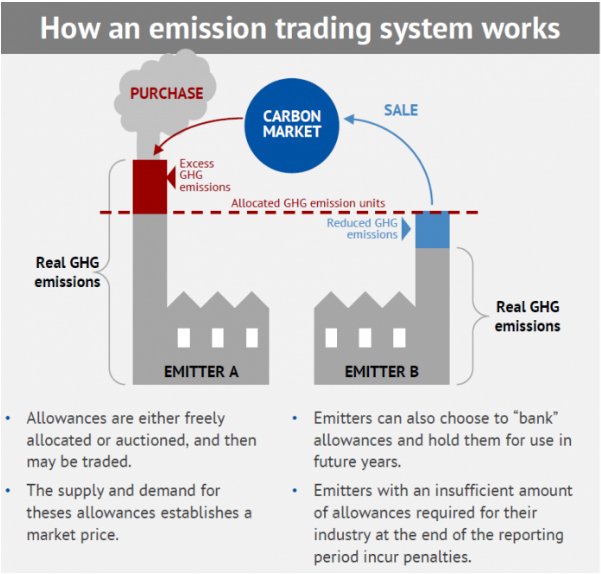
Source, Carbon Credits [1]
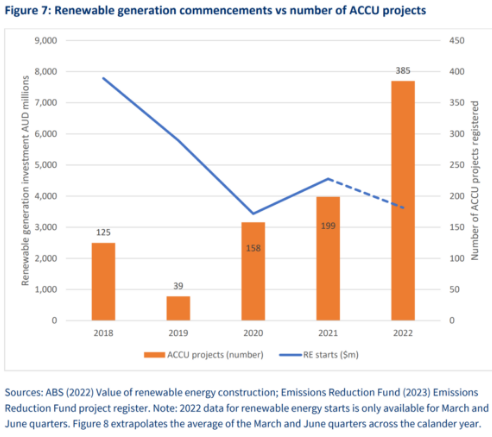
Source, Australia Institute [4]
Carbon Credit Assignments
Firstly, the carbon credits require integrity, such that the credits actively reduce CO2 and that it is permanent. However, according to the Australia Institute, even with high integrity they at most maintain the status quo, and if the validity of the actual projects is in question, it could lead to net increases of emissions compared to not having the credits. For example, Verra had over 90% its carbon credit offsets from rainforest projects fail to represent actual reductions in pollution [4] as the areas of preserved forest were remnants of existing forests that had been cut down which were not representative of the credits.
The Australian government’s carbon credits [ACCUs] has been shown to be ineffective as well, with 75% of them failing to lead to actual reduction in emissions [4], which has resulted in a further increase of emissions when combined with a growing fossil fuels industry.
In-Market Regulations
Secondly, the carbon offset market is an inherently biased system that depends on it’s own growth. As previously mentioned, groups like Verra and Climate Impact Partners act as de-facto regulators for carbon offset projects, but also sell access to these projects to major polluters to help their offsets [2]. This incorporates an inherent bias where the systems regulators are participating in the market it’s regulating, and can result in fraudulent activity as previously mentioned due to these groups being incentivised to promote high-integrity options and review positively to increase their own stock margins.
This is further worsened by the number of carbon credits being issued each year exceeding the number retired, causing the industry to continuously grow. The combination of these factors is a market to reduce emissions being poorly regulated, investing in projects that fail to accomplish their goals as the industry has fraudulently regulated them, and then increasing their own values which creates a system where emissions actually increase in a demand to increase market size [1] and stock value without minimal government regulation.
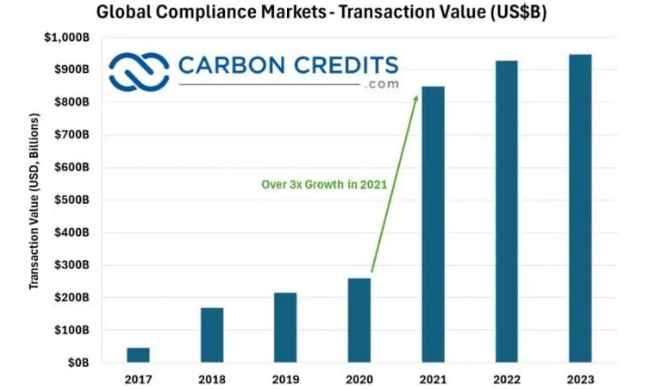
Source, Carbon Credits [1]
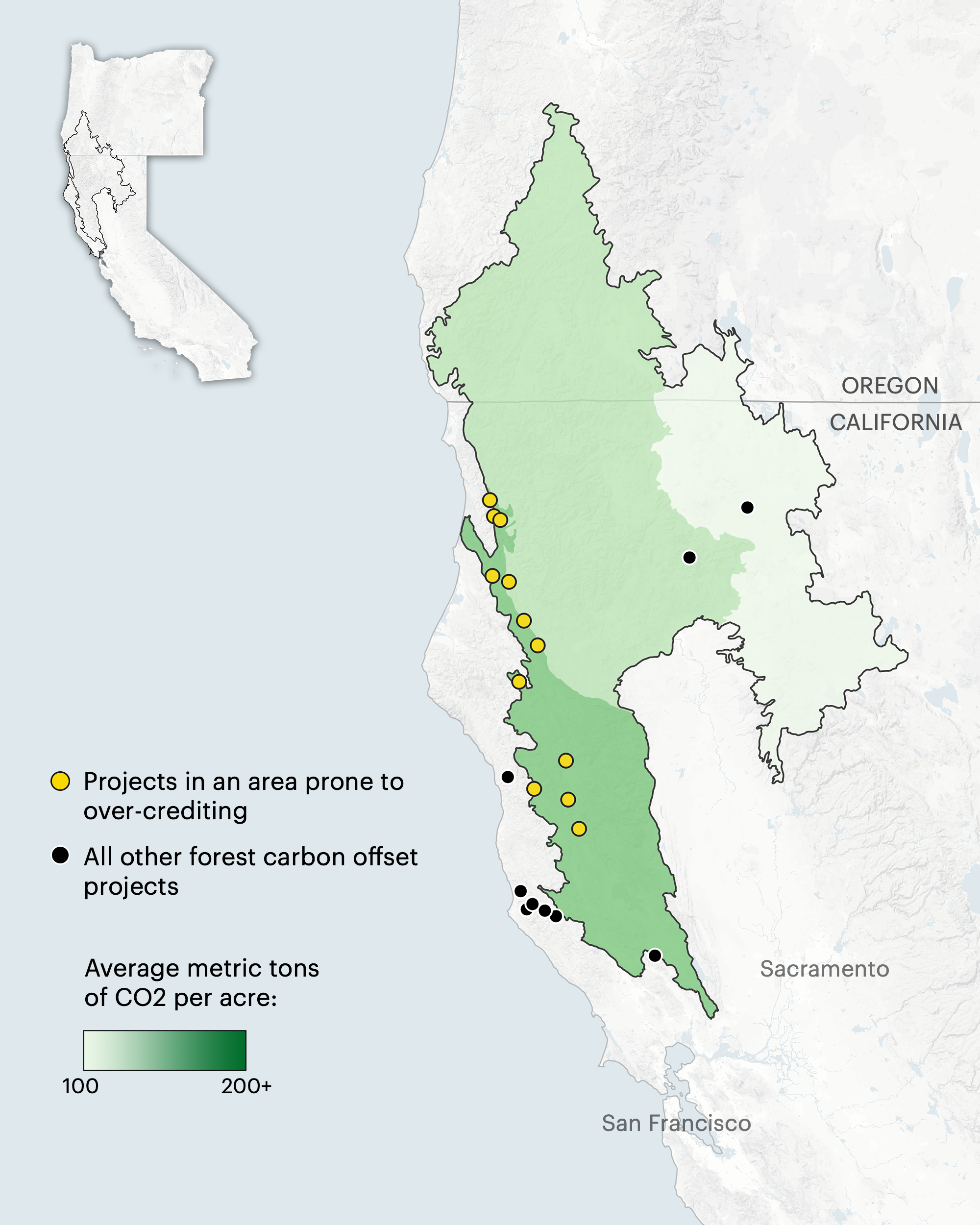
Source, ProPublica [5]
Insufficient Detail in Regulations
California has also been implementing carbon credit systems relating to the conservation of forest regions, based primarily on location and type of tree located in the region. For example, the coastal region of the California preservation area is worth 205 tonnes per acre of carbon compared to the inland’s 122 tonnes per acre [5], with the border region having almost identical local flora. Due to this, a vast majority of carbon preserving projects were located inside this border region on the coastal side, resulting in a vast overestimation of the carbon credits which has been recorded to be worth $8 million.
Further research by CarbonPlan has estimated the total cost of fraudulent credits issued to be closer to $176 million, which shows significant issues with the way we measure carbon credits [5].
What we can do
These are just a few examples of issues with the current carbon credit market, but the real effects have a horrid toll on the world where they do the opposite of what they intend, leading to increased emissions and a market bubble dependant on an ever increasing emissions to offset. The question of what we can do to change this is a complex one, but a crucial starting point would be to take the duty of regulation out of the hands of corporations which participate in the market, and instead have an impartial body that can perform a proper assessment of projects to determine value.
In addition, also further refining the valuation process, reducing areas of ambiguity that have been exploited over recent years and force corporations to pay a fair share in repairing the damage they are helping to cause. These are just a beginning point, but in order to make any realistic progress we must try to hold those responsible to account and not allow them to effectively govern themselves on matters this crucial.
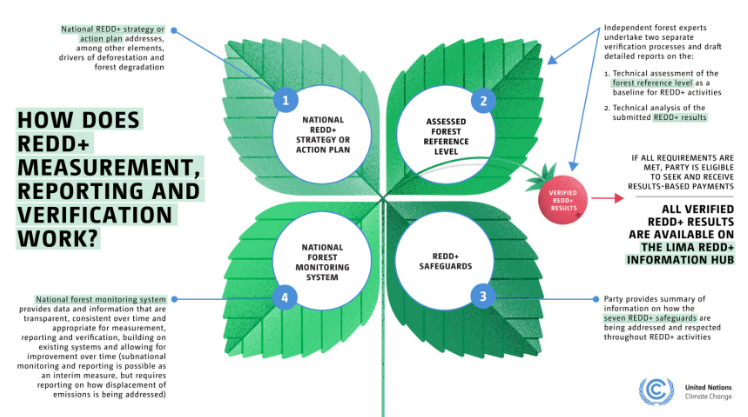
Source, UNFCCC [6]
Get in Touch with Us!
We’d love to hear from you. Whether you have feedback, suggestions, or want to share insights related to sustainability and environmental truth, your voice matters. At Earth Athenaeum, we believe in open dialogue and collaboration to uncover and explore the realities behind green initiatives and corporate claims.
If you have questions, ideas, or simply want to connect, feel free to reach out — we’re here to engage, listen, and learn together.
Reference List And Further Reading
[1] – carbon credits. The Ultimate Guide to Understanding Carbon Credits [Internet]. Carbon Credits. 2022. Available from: https://carboncredits.com/the-ultimate-guide-to-understanding-carbon-credits/
[2] – Carbon Credits Explained [Internet]. www.climateimpact.com. Available from: https://www.climateimpact.com/services-projects/carbon-credits-explained-what-they-are-and-how-they-work/
[3] – Abatable. Carbon Credits Prices by Project Type · Sep 2022 · Abatable [Internet]. Abatable. 2022. Available from: https://abatable.com/blog/carbon-credits-pricing/
[4] – Starr H. The Problem with Carbon Credits and Offsets Explained [Internet]. The Australia Institute. 2023. Available from: https://australiainstitute.org.au/post/carbon-credits-and-offsets-explained/
[5] – Temple LS. The Climate Solution Actually Adding Millions of Tons of CO2 Into the Atmosphere [Internet]. ProPublica. Available from: https://www.propublica.org/article/the-climate-solution-actually-adding-millions-of-tons-of-co2-into-the-atmosphere
[6] – UNFCCC. What is REDD+? [Internet]. United Nations Climate Change. 2024. Available from: https://unfccc.int/topics/land-use/workstreams/redd/what-is-redd
[7] – ICAO. Carbon Offsetting and Reduction Scheme for International Aviation (CORSIA) [Internet]. ICAO. 2019. Available from: https://www.icao.int/environmental-protection/CORSIA/Pages/default.aspx
[8] – H S. Who Verifies Carbon Credits? [Internet]. Carbon Credits. 2021. Available from: https://carboncredits.com/who-verifies-carbon-credits/
